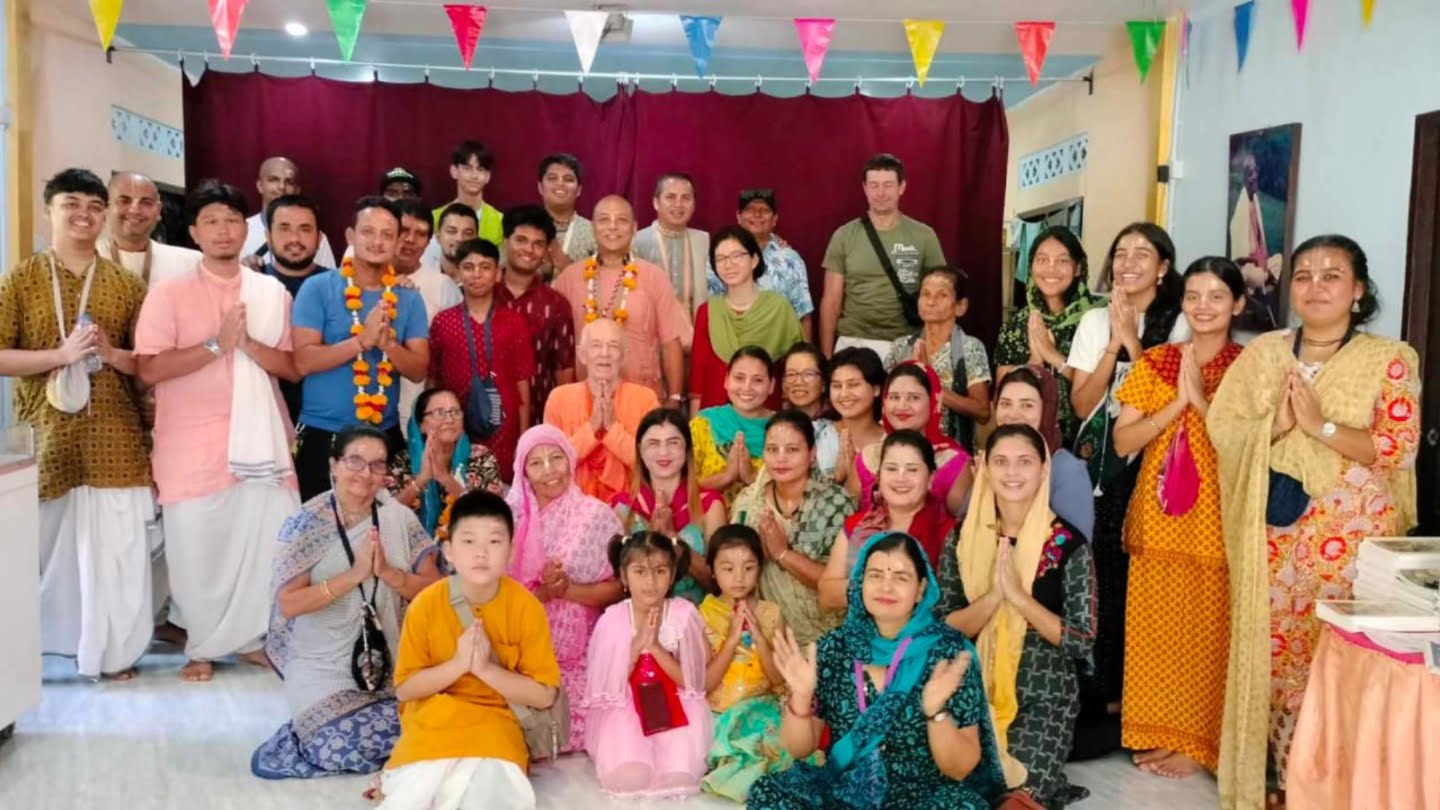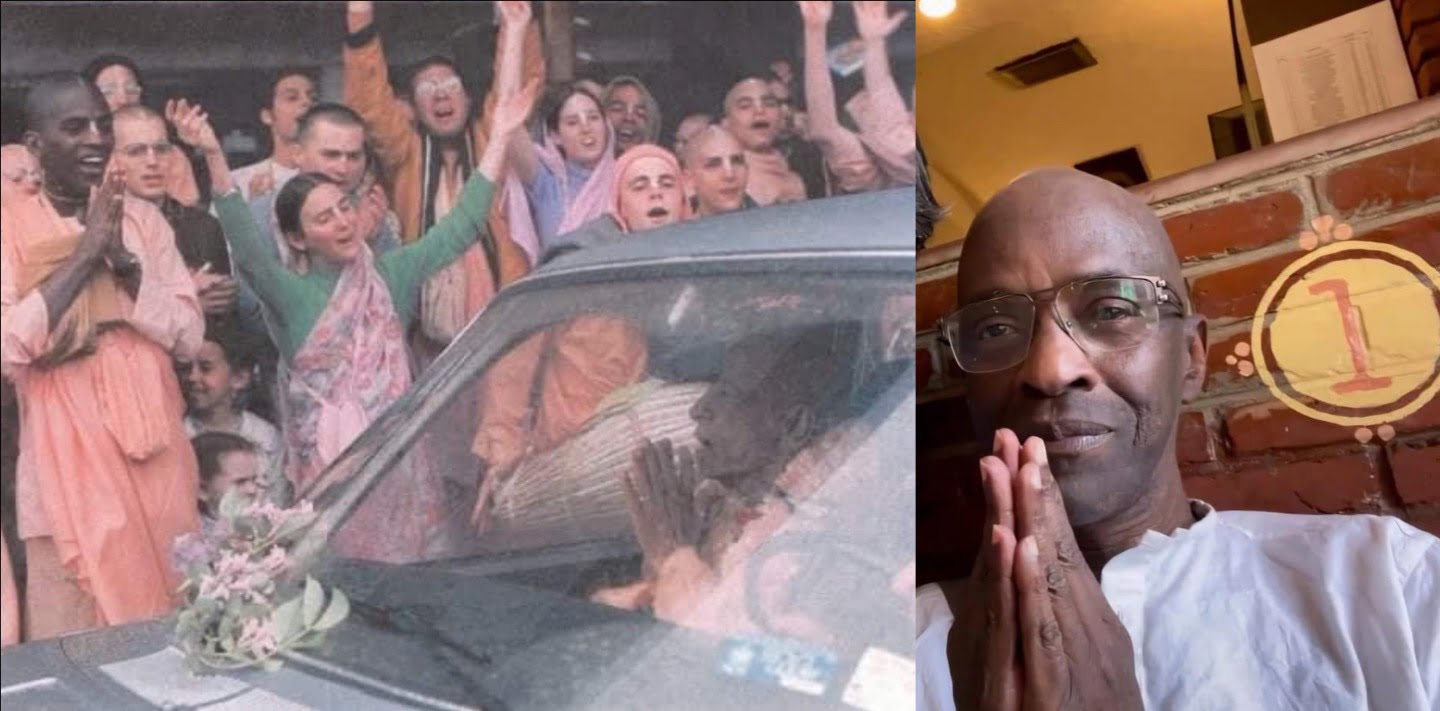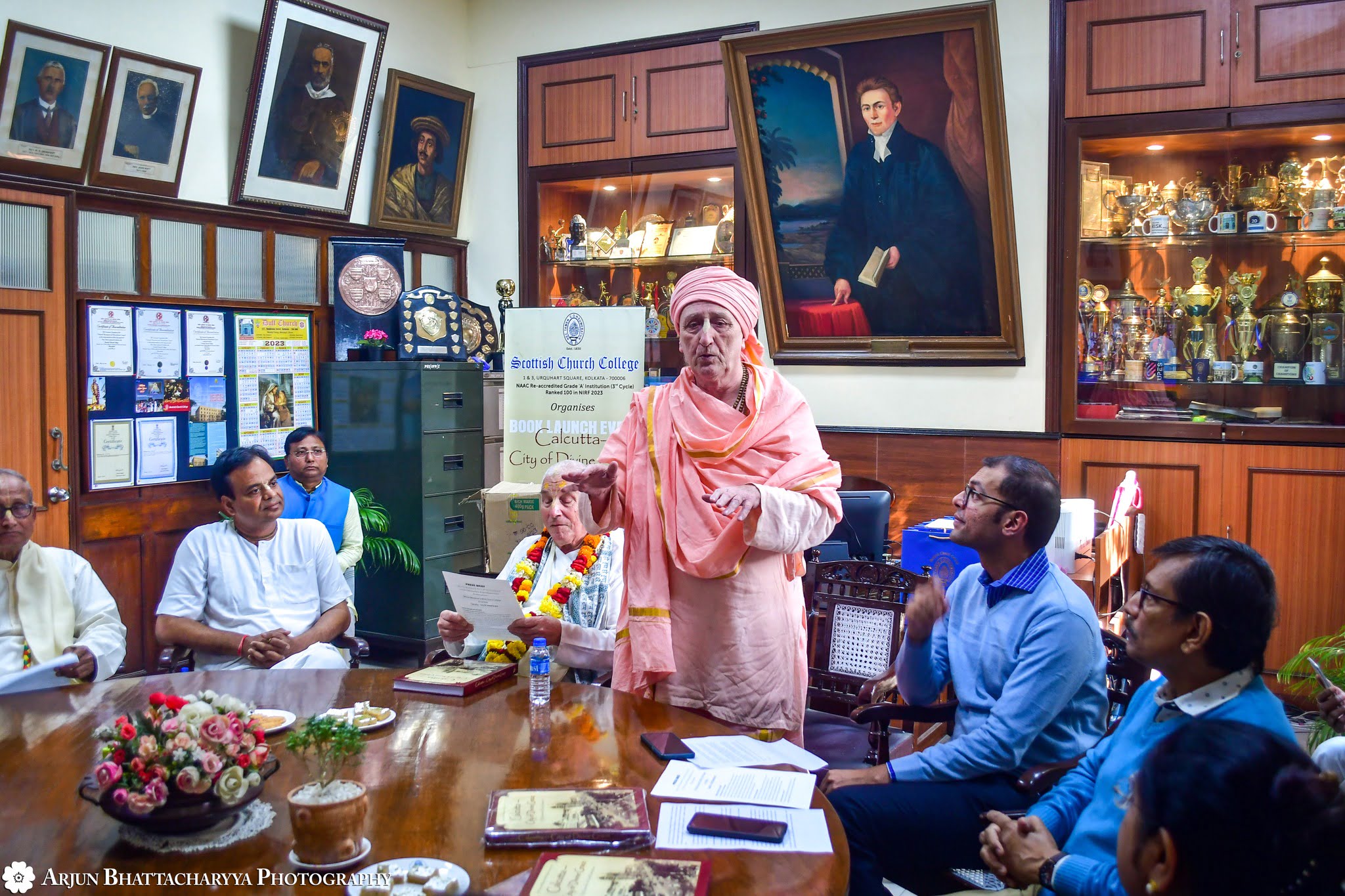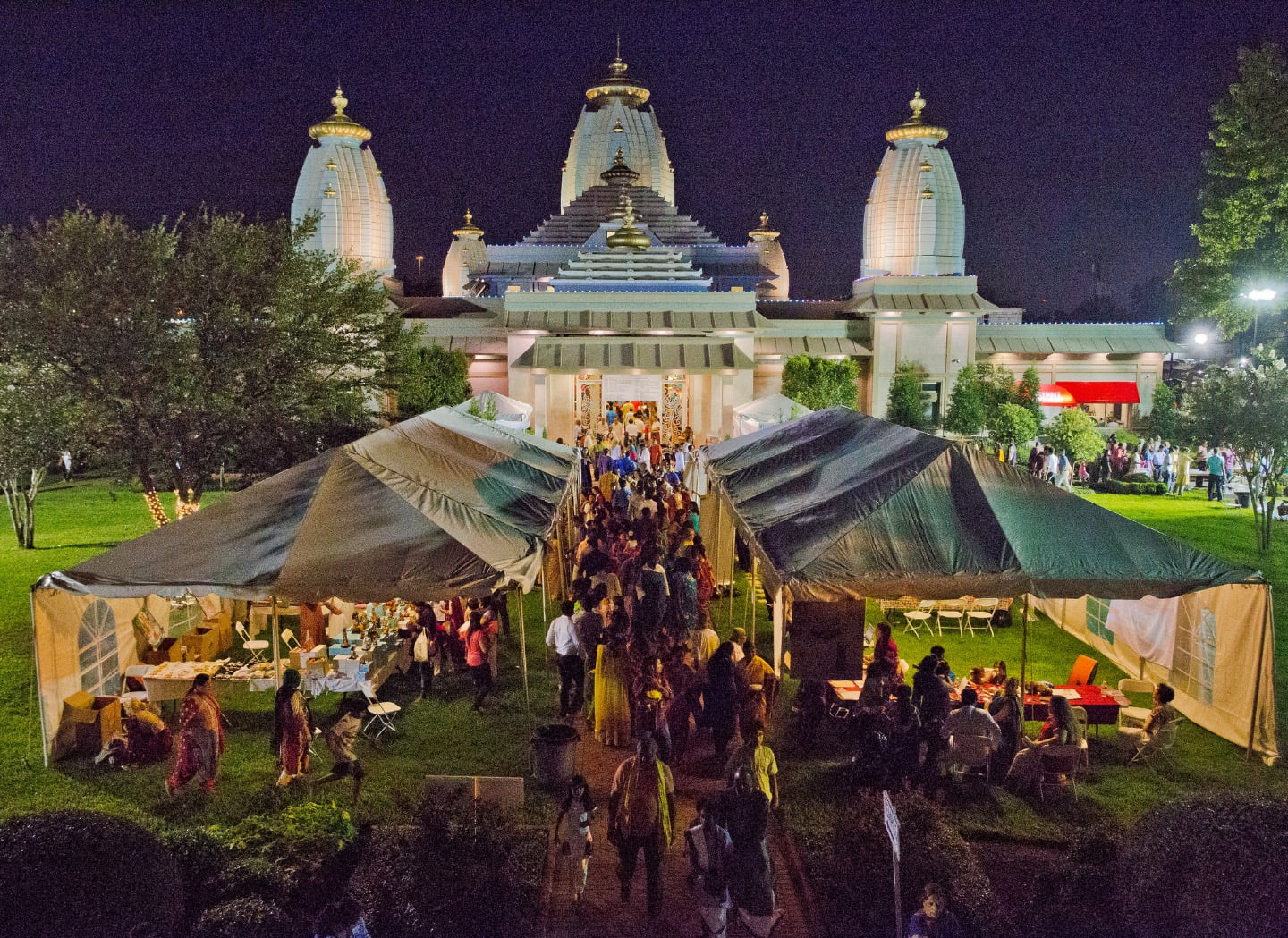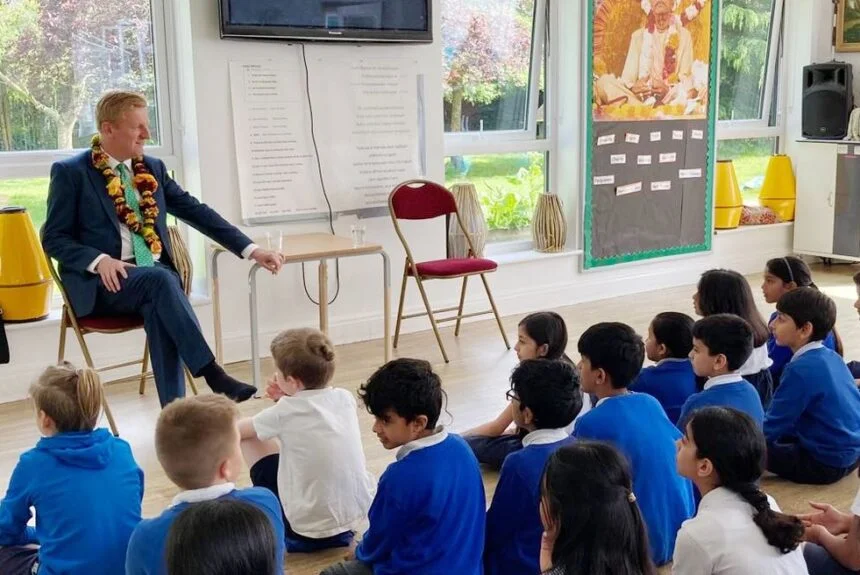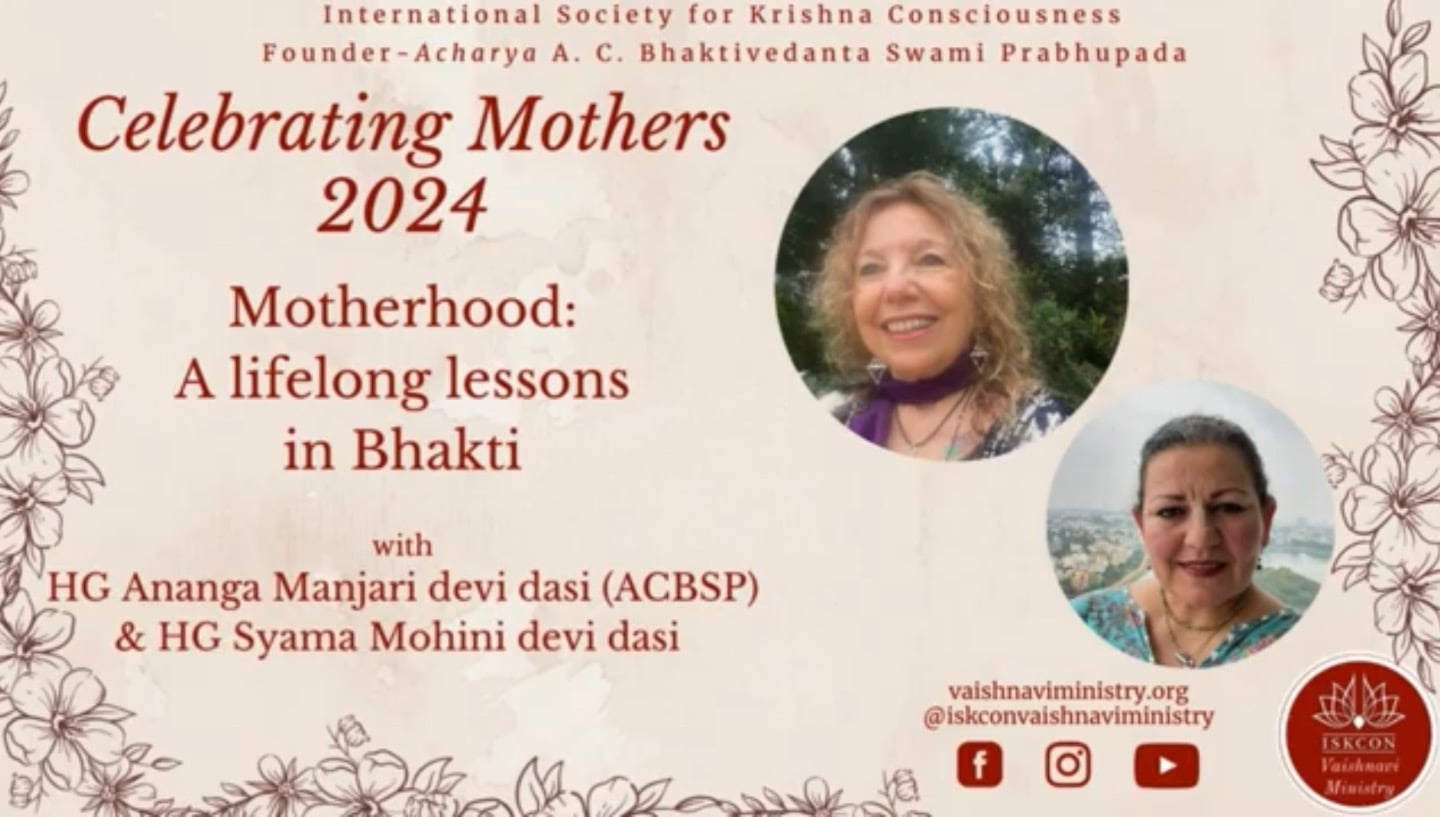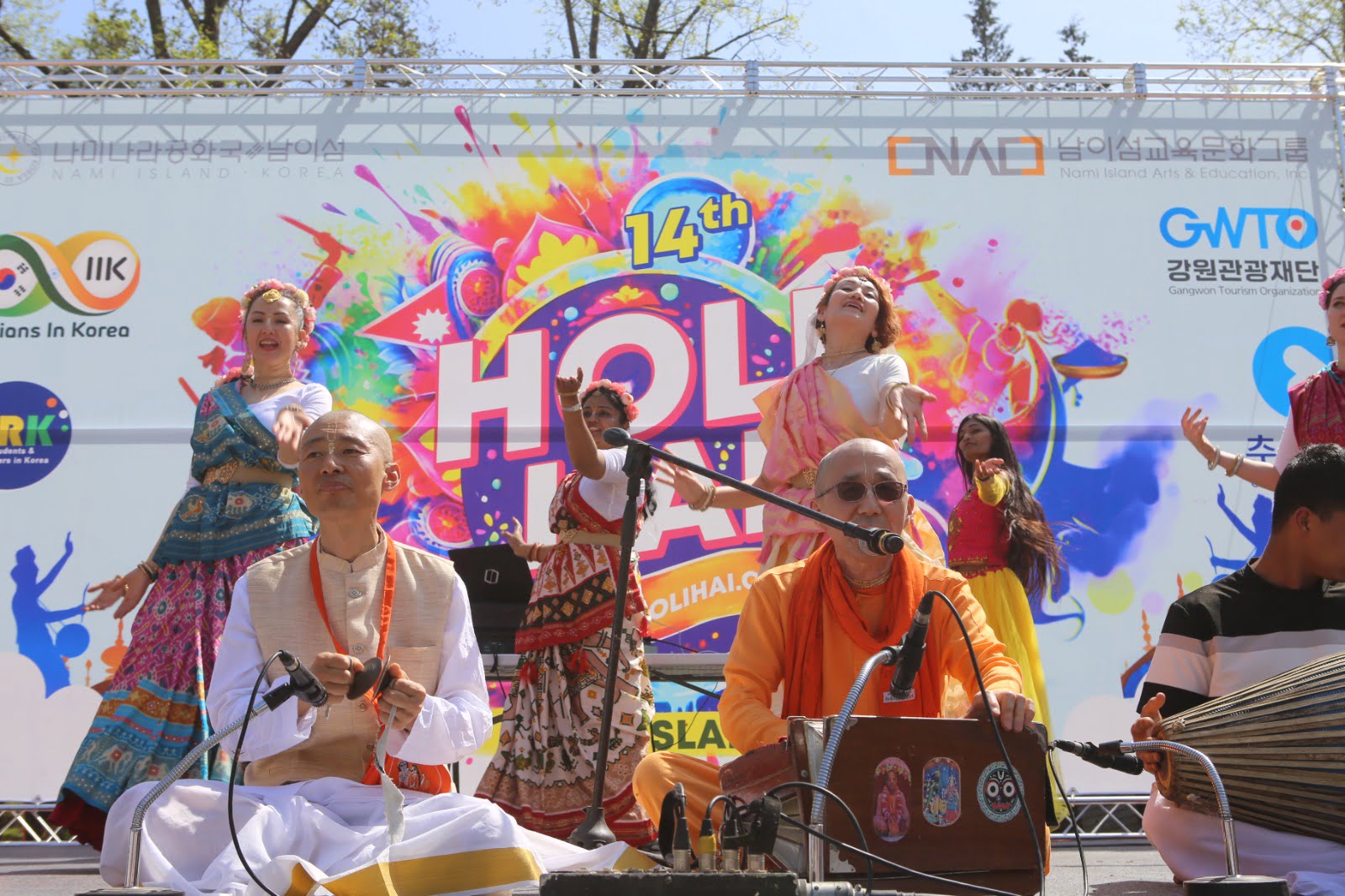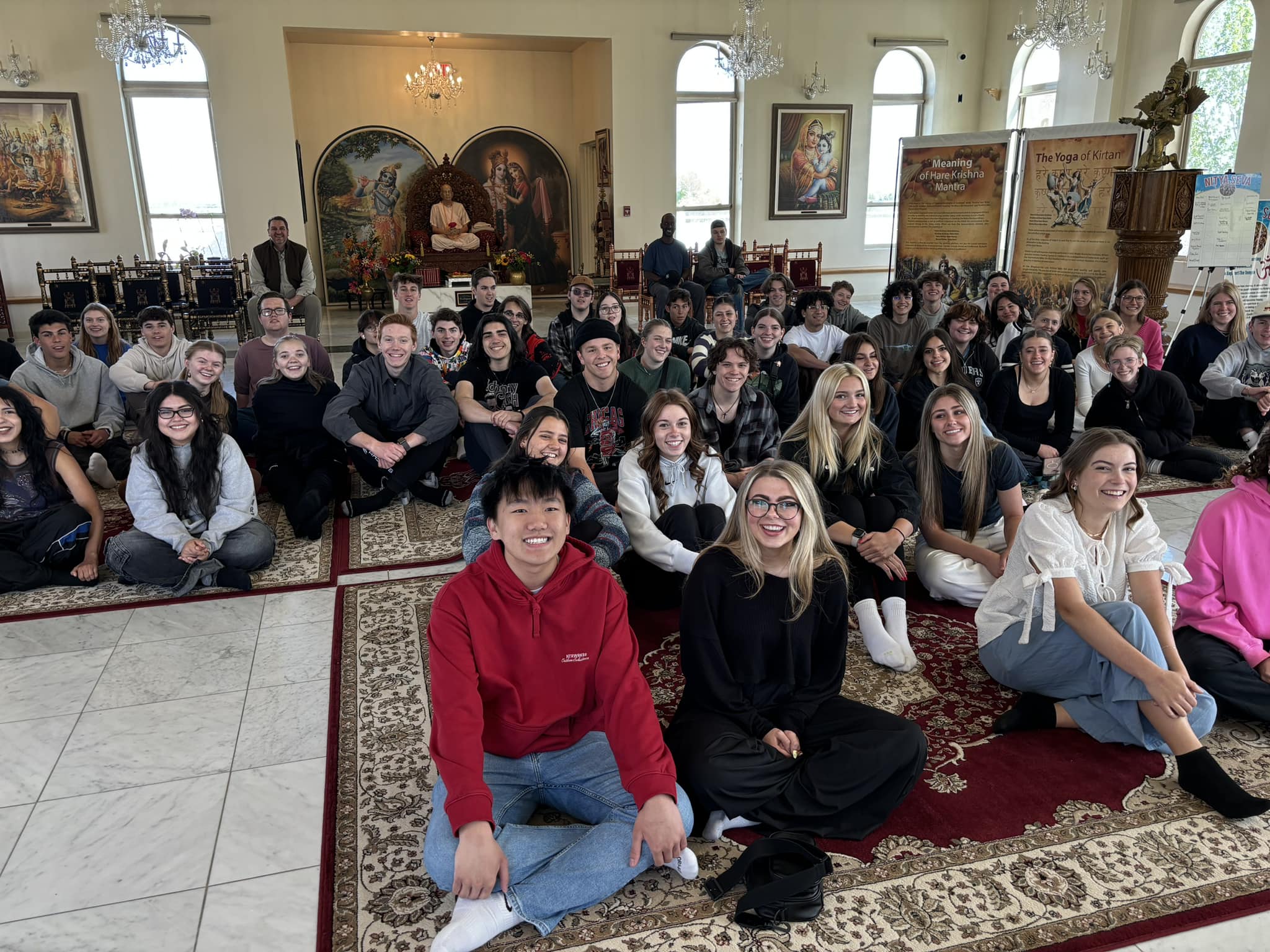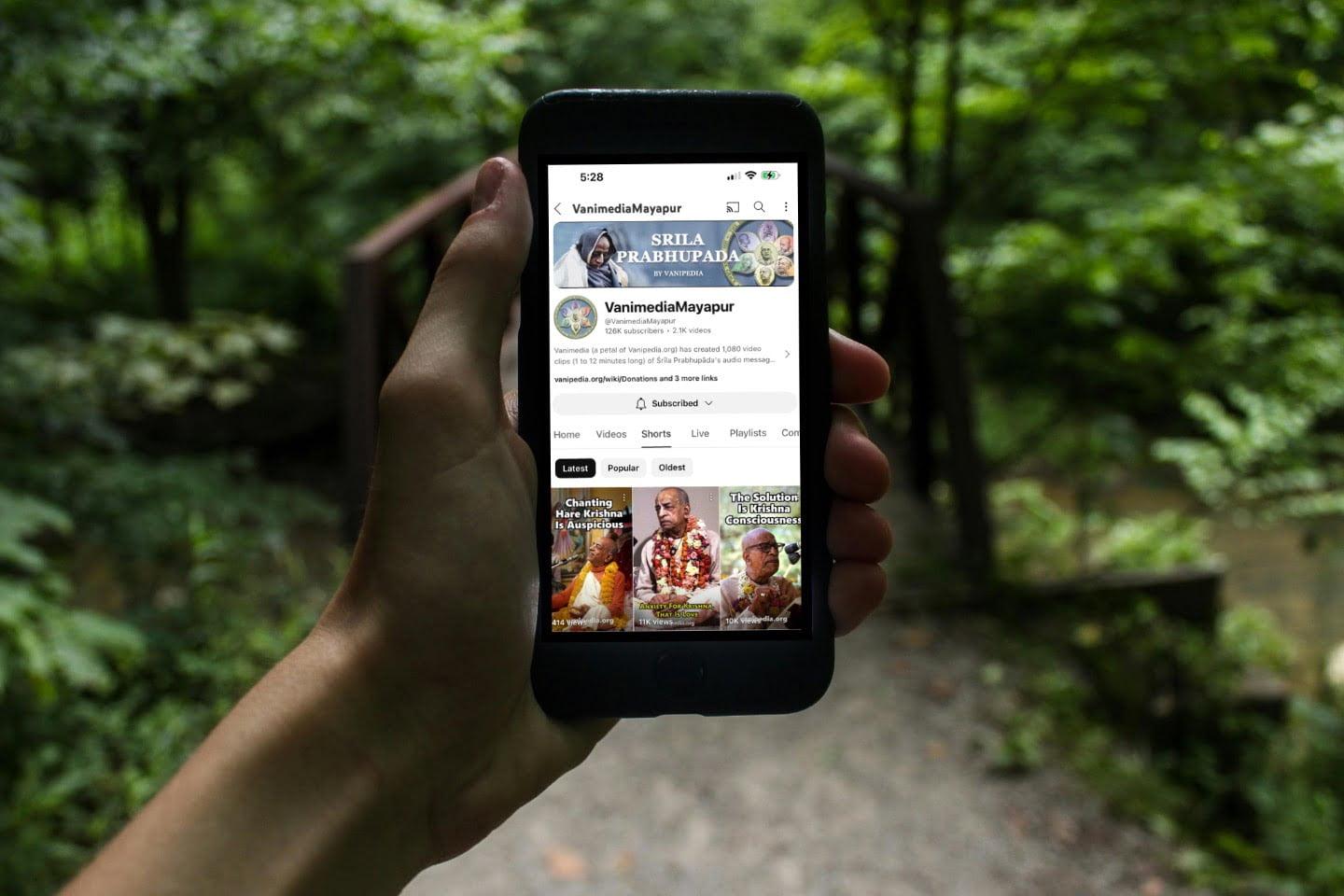Jaladuta’s “Scurvy Crew” Brave Danger and Death in Bihar
By Madhava Smullen | May 01, 2010

A “scurvy crew” of eight ISKCON devotees boarded the “Jaladuta” on March 20th this year for their fourth annual Jal Yatra, continuing their journey of spiritual inspiration and perilous adventure down the length of the Ganga.
Meaning “Water Journey,” the project was launched in 2007, when devotees volunteering at Parasurama Dasa’s Food For All charitable organization in London, England traveled down the Yamuna River—which later joins the Ganga—starting at Lord Krishna’s birthplace of Vrindavana Dhama and finishing at Sri Chaitanya’s birthplace, Mayapur.
The next year, the group boated from Mayapur through Kolkata to Ganga Sagara, where the Ganga meets the ocean.
In 2009, it went white-water rafting yogi-style, starting at Prayag in the Himalayas and floating through holy places such as Rishikesh and Haridwar before reaching the city of Kanpur, Uttar Pradesh.
This year, the international group—consisting of one Englishman, two Irishmen, one Russian, one Ukrainian, one Estonian, one German, and one Bosnian—set sail at Gopalganj near the Nepal boarder, and floated down the sacred Gandaki River through the state of Bihar, eventually joining with the Ganga and completing their trip at Patna. Letting the Gandaki carry them was a special privilege, for the river is also known as Narayani, another name for Krishna’s eternal consort Radharani, and is the source of all salagrama silas, a type of sacred stone worshiped as a direct manifestation of Krishna Himself.
By now, traveling monk Mahavishnu Swami, Vrindavana cow-shelter manager Sanak Sanatan Dasa, Food For All Director Parasurama Dasa, and his team Kulashekhara Dasa, Taruna Dasa, Rasananda Dasa, Krishnamayi Dasi and Arjuna Dasa, are all seasoned adventurers. And they knew exactly what to expect on their fourth journey—the unexpected.
You get the sense that they welcome this. Take their method of transportation, for example. The “Jaladuta”—named after the cargo ship that carried ISKCON founder Srila Prabhupada from India to the U.S. in 1965—isn’t exactly a pleasure cruise liner.
Built by the crew themselves, it consists of two inflatable tubes, a couple of plywood boards, and a canvas sail inscribed with the words “Hare Krishna.” To some, it may not look like the kind of vessel you’d want to travel twenty to fifty kilometers a day in for two weeks—but to the Jal Yatra crew, it epitomizes their ideal of a simple living, high thinking lifestyle.
“It has no engine, and depends only on the wind and devotees paddling,” explains Parasurama Dasa, a mild-mannered yet swashbuckling devotee with a lilting Irish accent, dubbed the “Pirate Captain” by his crew. “And while it’s cheap to make, it’s very sturdy. You can jump up and down, chanting kirtan, on it as much as you want and it’ll hold out.”
This comment, like most of his descriptions of life on the water, is accompanied by a cheeky smile, embedded in an immensely appealing, St. Francis-like carefree spirituality.
“We lived the traditional Sadhu (holy man) lifestyle throughout our journey, depending on the Lord for our material necessities,” he says. “We had a small cooker on the boat, which we used to make kichari and chapatis even as we were sailing. We used vegetables donated by farmers in villages we visited along the way. And the whole time, we drank only Ganga water, using a small filter we carried with us, and never once got sick.”
Other necessities were met just as simply. When the heat became too much, devotees jumped into the Ganga and sheltered in the space between the water and the floor of the raft—what Mahavishnu Swami referred to as the Jaladuta’s “Air-conditioned compartment.”
Laundry day, meanwhile, meant dunking your clothes over the side of the boat. “Or we just jumped in with all our clothes on—that’s a bath and laundry for the price of one!” Parasurama laughs. “Then we would lay our clothes on the banks during the sunny part of the day, and they’d be dry in minutes.”
Of course, the Jaladuta crew were not only on a simple-living holiday—they also had the spiritual wellbeing of themselves and others to consider.
Every morning, they would hold a full worship program for their onboard deities of Gaura Nitai, while throughout the day, they would occupy themselves by chanting and reading transcendental literature.
Upon reaching major towns, they would hold public chanting performances called Harinamas, while in more rural areas they would stop at one of the many remote Bihari villages along the banks of the Ganga. There they met villagers who, although they had never seen devotees before, loved kirtan and quickly learned the Hare Krishna maha-mantra. Soon these villagers were enthusiastically leading the chanting themselves, eating prasadam, and showing respect for and interest in Prabhupada’s books, despite being mostly illiterate. “They’re dry wood,” said Mahavishnu Swami, observing how easily they took to Krishna consciousness.
But not everyone was so friendly. “When Mahavishnu Swami joined us in Bihar at the beginning of our trip, we were alarmed—he had quite a lot of blood on his face and legs,” Parasurama recalls. “He said, ‘I just got into a fight.’ It turned out that some thieves had tried to rob him and he had rugby-tackled them, getting hurt in the struggle but saving his luggage. He’s the most fearless person I’ve ever met—65 years old going on 20!”
Throughout the Jaladuta’s journey through Bihar, such attacks remained a concern. Since Sri Chaitanya Mahaprabhu’s lifetime in the fifteenth century, when Biharis would kidnap the smaller Bengalis and use them for slaves, the state was famous for being full of dacoits.
To guard themselves from these bandits, the Jal Yatra crew would wait until darkness fell every evening before finding an island to pull up to for the night. They would then set up a mosquito net and sleep on the beach, an arrangement Mahavishnu Swami called “A Five Star Hotel.”
Dacoits weren’t the only danger—there was also Mother Nature to be wary of. Once, when Parasurama slept on the boat on a seemingly calm night, the Ganga became violently choppy in the small hours and ate into the sandy two-meter high bank, eroding it until it collapsed onto the boat. “I woke up buried and completely bewildered, with the boat almost tipping over from the weight of the sand,” he says. “Fortunately my team-mates where there to pull me and the boat to safety.”
On another occasion, Parasurama was running alongside the boat on the bank, pulling it with a long rope—something the crew did whenever the wind did not blow in their favor. “As I ran along, I spotted a bunch of buffalos sitting in the water in front of me,” Parasurama says. “I ran around them, but when they saw the boat they got frightened and began to run, and the rope got stuck in their curly horns. They ran up the bank, dragging the boat with them, with all the devotees sitting on it screaming. It was like something out of a cartoon.”
Other episodes were far more dire. Walking carefreely in the mud along the bank one day, one member of the Jal Yatra party began to steadily sink down into it. Realizing that he was actually in quicksand, the other devotees threw him a rope and pulled him free from certain death.
Although all the devotees returned from their trip safely, they were constantly reminded of how, as the old Vedic maxim goes, life in this world is tottering like a drop of water on a lotus leaf. Every day, they would see 12 to 14 dead bodies, either floating on the river or washed up on the banks. Some were babies whose mothers had thrown them into the Ganga because they couldn’t or wouldn’t take care of them. One morning, upon waking, the crew saw that there was one dead body on either side of their camp, only 15 meters away. Death became a common sight.
“The Ganga often erodes its banks, and once we saw a whole banana plantation that had collapsed into the water, along with the dead body of the farmer who had once taken care of it,” Parasurama says. “Sometimes whole villages are destroyed and the people have to pick up and move somewhere else. There are also birds that nest in holes in the banks, and their homes are destroyed too. And there are flies on the Ganga that are born one evening, and are all dead the next morning. So to chant Hare Krishna, with all this proof of life’s temporary nature all around us, was a very sobering experience.”
Also proof of the state of this world was the rampant pollution of the Ganga, an issue that the Jal Yatra crew tried to raise awareness of wherever they could. At every major town along their way, they would contact a local ISKCON life member who would set up a press conference for them, and would meet a clamoring group of reporters at the riverside.
“Our journey was big news, since with our combined annual trips, we are traveling the entire almost 2,000 kilometer length of the Ganga,” Parasurama says. “So we were given a lot of media coverage. At Patna, three television crews and seven newspaper reporters met us. All the newspapers, including the Hindustan Times, gave us front page stories. So we used this opportunity to present an ecological angle to our story, and to encourage the public to respect Mother Ganga and to stop polluting her.”
Inspiring the Jal Yatra crew all the more to fight for her preservation was the Ganga’s beauty, still apparent amongst the death and pollution.
Colorful wildlife abounded in her waters and along her banks, including many dolphins, who sometimes swam alongside the Jaladuta.
Meanwhile amongst the plants on the riverside, the mighty Banyan tree was chief—an especially vast one sat sixty children in its branches as they learned the maha-mantra from Mahavishnu Swami during one village visit.
Devotees also drank in the beauty of and paid their respects to the many holy sites that lined their route, including a temple in Kanhaiyasthan in the Bihar-bordering state of Jharkhand, which carries Chaitanya Mahaprabhu’s enshrined footprints—and where the Lord is believed to have once stayed on his way to Vrindavana from Bengal.
They also visited the location in the city of Hajipur where the Vaishnava saint and renunciant Sanatan Goswami once received a costly woolen blanket as a donation. When he noticed that Sri Chaitanya Mahaprabhu did not approve of his wearing such a garment, he traded it with a mendicant for a patched, torn quilt. Lord Chaitanya was pleased when he saw this, saying that Krishna had taken away Sanatan Goswami’s last bit of material attachment.
The crew also visited Sonepur, just outside of Patna, where eons ago the elephant-king Gajendra prayed to Lord Vishnu upon being attacked by a fierce crocodile. When the Lord finally appeared as a result of his prayers, Gajendra offered the Lord a lotus flower with his trunk and was saved. To this day, the elephant-king’s prayers are recorded in the devotional epic Srimad-Bhagavatam, and are studied by many Vaishnavas around the world.
Inspired by such sights and meditations, the Jaladuta crew returned home on April 6, already planning their next Jal Yatra. “In 2011, we’ll do another spiritual white-water rafting trip from Yamunotri, the source of the Yamuna river, to Vrindavana,” Parasurama says.
The “Pirate Captain” grins, rosy-cheeked with anticipation. “We can’t stop now. We’re addicted to adventure.”
GangaTrip2010 from foodforall on Vimeo.





